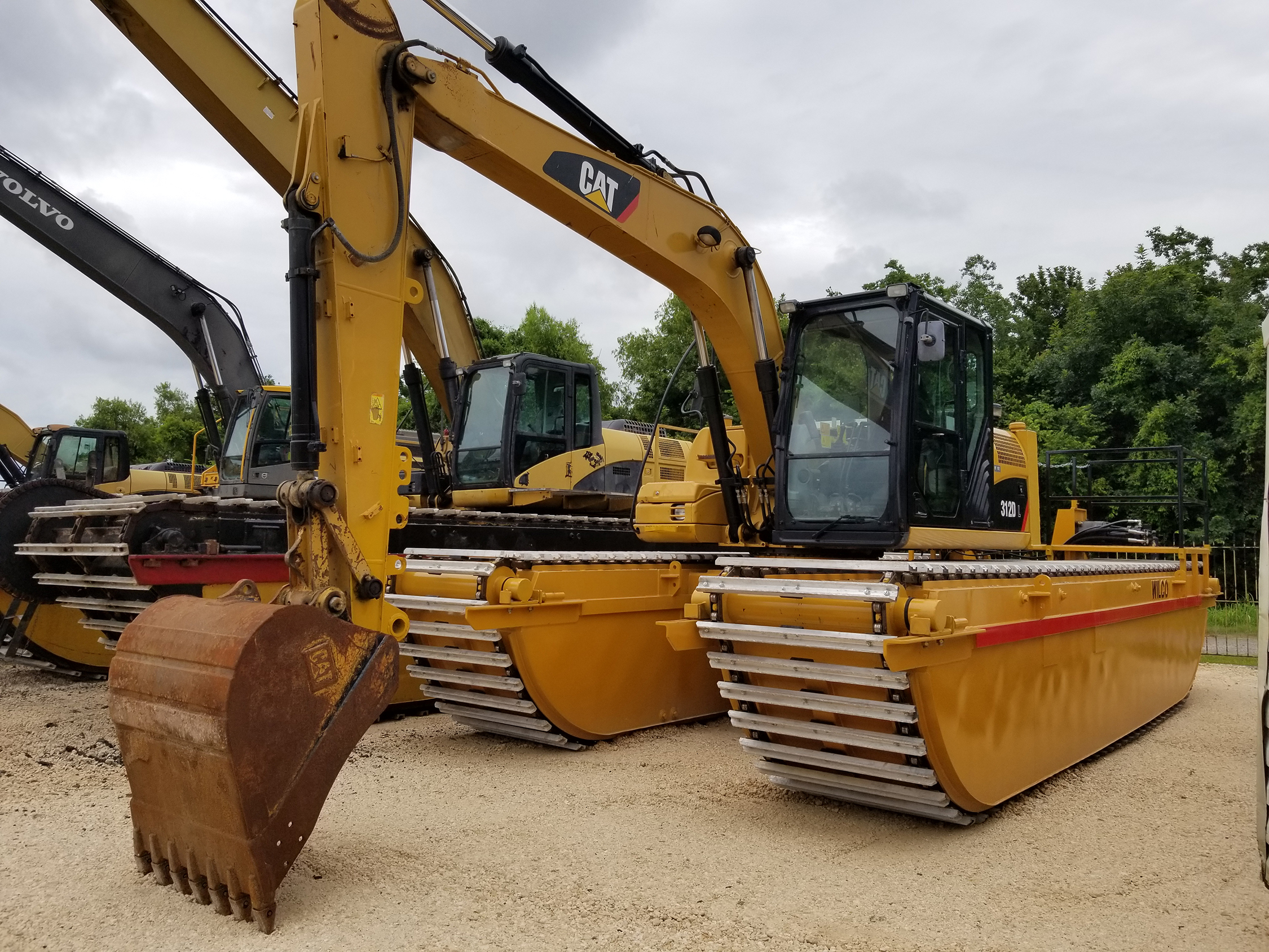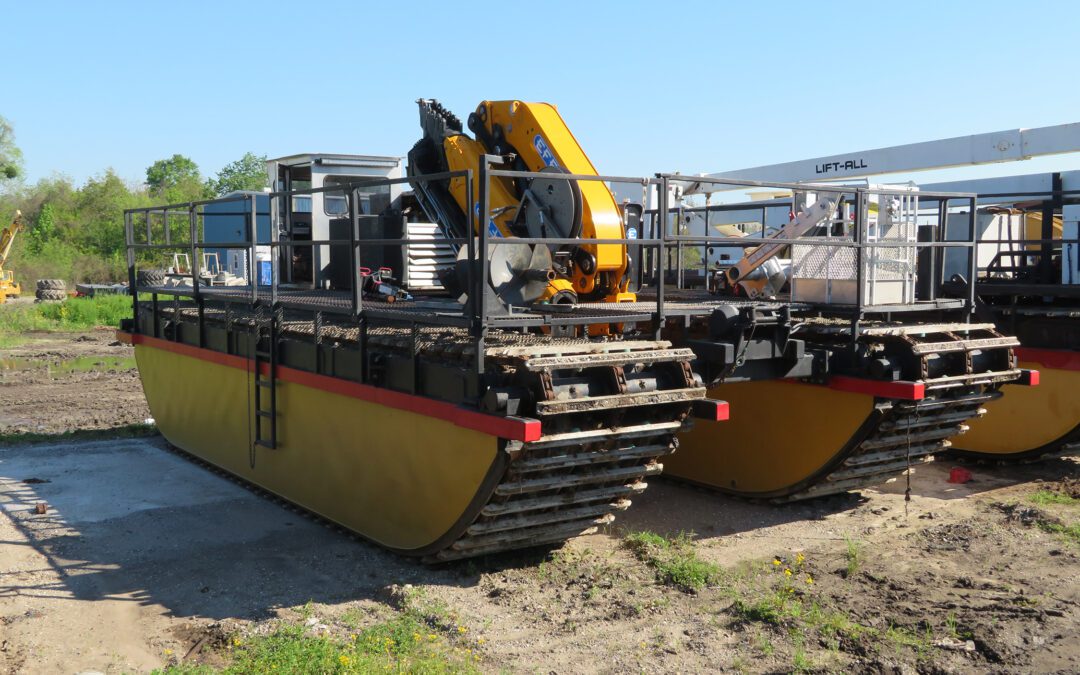Investing in any construction equipment (including an amphibious excavator) is always a complex proposition with many factors at play.
When investing in this type of equipment, you’re–in part–deciding the direction of your career or company’s trajectory. After all, it’s not like you’re buying a hammer or drill–which can be pricey enough when you purchase updated models.
Even an amphibious excavator for sale at reduced pricing is a substantial investment. It’s a vehicle–and even discounted vehicles aren’t cheap.
Of course, you can buy from sources that offer more value with their options (like Wilco Marsh). However, given the work you’re about to do, there are limits to how little you can spend.
Also, you can’t go into this purchasing process without a firm grasp of your pending investment. Too many complexities are involved. Developing a thorough knowledge base on your future equipment purchase–in this case, an amphibious excavator–is crucial.
By educating yourself, you’ll spend the precise amount on quality equipment. You’ll then perform the associated tasks safely and efficiently while generating a lucrative return.
Keeping the above preamble in mind, here’s how to choose the right amphibious excavator for your needs.
Walk Before Your Can Sprint–Start With The Basics.
The scope of a project requiring an amphibious excavator can be daunting. Often, it leads to people rushing the purchasing process. There’s a lot of work to do, pushing you to procure the appropriate tools for the job ASAP.
Your urgency is appreciated–promptness is a valuable trait to possess in your line of work.
Still, investing in an amphibious excavator needs to start at the basics. You don’t want to fast-track your selection process and end up with a piece of equipment that isn’t up to the task. Doing so might set you up for financial losses–and who can afford sunk costs in this day and age?
Beginning with the basics discussed below, you’ll develop the foundational knowledge to wisely invest in an amphibious excavator.
An Overview Of The Amphibious Excavator
You likely have a reasonable idea of what an amphibious excavator is.
Regardless, researching more specific details clarifies all potential confusion. This additional legwork provides critical insights to help you purchase equipment that generates desirable returns.
Read on as we break down the specifics of an amphibious excavator:
An Amphibious Excavator Is Equipped With Sealed Pontoons.
A primary purpose of an amphibious excavator is to dredge while floating atop shallow waters. Thus, these water-centric excavators have anti-corrosion, sealed pontoons that are seawater resistant and made from high-tensile steel.
Due to its sturdy makeup, an amphibious excavator thrives in arduous conditions.
Furthermore, hydraulic direct drive track systems enable all amphibious excavators to fully self-propel.
The Amphibious Excavator Is Bolstered By Innovative Technology.
When investing in an amphibious excavator, you’re putting money into a vehicle steeped in innovation.
Specifically, an amphibious excavator’s dredge undercarriage is a relatively recent invention–and it’s made quite a proverbial splash.
The game-changing aspect of the undercarriage is its elimination of the need to bring barges through canals or construct roads. These were the previous lengths that engineers had to reach to provide solid ground for wetland industrial pump application.
Equipped with this innovation, the engineers vastly reduced the overhead costs of such wetland projects.
Undercarriages allow heavy equipment like an amphibious excavator to float and function in aquatic environments. Thus, there’s no more need for supplementary construction.
No matter how rugged the wetland is and where it is located, you can trust an amphibious excavator to operate efficiently.
An Amphibious Excavator Investment Is Good For The Environment.
Adding additional projects like bridge-building and canal construction to support wetland work has many pitfalls.
We’ve established that the overhead costs are astronomical. These expenses aren’t surprising, given the materials, parts, and labor that go into such work.
Of course, time efficiency is also impeded by the need to add bridges and canals to wetland projects.
Then there are the environmental costs. The extra work will put the local surroundings at risk, regardless of how green-conscious a project is.
That said, how else could loads of heavy machinery travel across soft, wet terrain? It’s too dense for floating and too soft to walk on.
The amphibious excavator and its undercarriage allow workers to drive machinery straight to their site without the abundance of extra steps.
What Are The Primary Features Of An Amphibious Excavator?
The primary feature of an amphibious excavator is the relationship between the undercarriage and the pontoons.
Pontoons on an amphibious excavator are hermetically sealed (airtight) and extendable. The undercarriage provides high levels of buoyancy through these pontoons.
These sealed pontoons give the option to mount vertical spuds when no reliable land is available to perform work.
A track chain powered by a multi-synchronous hydraulic drive system spearheads the movement of an amphibious excavator while aiding in flotation. Furthermore, the track chain increases tractive stability and efficiency across various soil conditions.
Multiple attachments (e.g., a dredge pump) can be mounted to an amphibious excavator. Thus, an amphibious excavator can perform numerous duties for a multitude of industrial applications.
What Are The Industrial Applications Of An Amphibious Excavator?
While it may seem that the amphibious excavator is only helpful in the vast wetlands of the south, the facts tell a different story.
Any project involving the following scenarios and environments can benefit from an amphibious excavator:
- River beds.
- Ocean shores.
- Recent floods.
These settings exist across the globe. Therefore, an amphibious excavator has cross-continental value and relevancy.
Here’s a list of applications in which an amphibious excavator can bolster efficiency:
- Dredging.
- Disaster recovery efforts.
- Environmental remediation.
- Construction projects (e.g., levees, highways, laying pipelines).
An amphibious excavator can also be a boon to any environmental dredging project.
Environmental dredging is regularly hampered by shallow water. As such, standard excavators get hindered by limited range and often get stuck.
Alternatively, an amphibious excavator drives on land and floats on water, keeping the operator within an optimal range of the water’s edge.
While heavier equipment creates entrenched track ruts, amphibious equipment causes minimal ground pressure. This results from the low weight and wide tracks of an amphibious excavator.
Moreover, dredge pumps can be mounted directly to an amphibious excavator, fostering optimal production rates and seamless movement.

Crucial Considerations Before Purchasing Your Amphibious Excavator
Below, we’ll delve into the thought processes required for choosing the most suitable amphibious excavator:
Return On Your Investment Should Always Be Top Of Mind.
First, we’ll examine your amphibious excavator investment through a more conventional lens.
Most financial departments want a 15% return on investment for newly purchased equipment to justify the costs.
While a standard payback period is around five years, the heightened competition in today’s landscape has made companies impatient. As a result, expected payback periods have been shrunken to two years.
Many cost justification methods exist (e.g., accounting rate of return, internal rate of return, and much more). They all revolve around the following facets:
- Operating costs.
- Inventory.
- Reduced labor.
An amphibious excavator ticks many of these boxes. The technology involved significantly decreases labor and operating costs.
Taking A More Modern View Of ROI.
Companies have begun to modernize their approaches to equipment-based ROI. They’re focusing on capabilities-based ROI calculations. This method prioritizes the following elements:
- Improved technology utilization.
- Enhanced methods.
- Streamlined systems.
Focusing on the above components should yield shorter process times, bolstered flexibility, reduced labor, and cost savings.
The right amphibious excavator for your needs ticks these ROI boxes. This equipment is an innovator in the wetland space, streamlining multiple processes and procedures.
Yet, the question remains–how can you pinpoint the correct amphibious excavator for your needs?
Matching An Amphibious Excavator To Your Needs
Given the inherent value of an amphibious excavator, finding the appropriate one for your needs can be complex. We’ll provide insights to help you get a better feel for your investment:
Choosing From An Embarrassment Of Riches.
When choosing from a vast range of expertly-crafted amphibious excavators (like you would be at Wilco Marsh), you’re faced with an embarrassment of riches. Therefore, deciding on what works for you becomes that much more complicated.
This is where the process gets more nuanced, and factoring in your return on investment becomes that much more integral.
Align The Equipment With The Application.
Heavy-duty equipment that can perform a broad scope of work sounds ideal in theory.
However, think about your purchase through the analogy of hiring an employee at a retail store. Would you hire someone to stock shelves when they have 20 years of front office experience? Of course not–because they’re overqualified.
If that same person applied for another front office position–or even a management position at your store–you’d likely consider them.
Your amphibious excavator investment requires a similar thought process. If your work is small-scale, a large excavator makes little sense. It’s over-qualified for the job.
Say you’re only purchasing an excavator for limited use. Projects are in the pipeline where one will be required, but it won’t often be a primary tool for your business. In this instance, investing in the most upgraded and expensive model may not make sense.
Alternatively, if the long-term health of your business calls for the frequent usage of an amphibious excavator, paying for a top-line model could prove beneficial. You’ll require something exceptionally durable and efficient to perform at a high standard every day.
There’s a need for balance, of course. You can’t bankrupt your business with your upfront investment.
Nonetheless, you’ll get what you pay for. Being too bargain-conscious and underpaying for essential machinery will cost your business more than it saves in the long run.
Know Who You’re Buying From.
An amphibious excavator investment offers little room to leave anything to chance.
Even smaller-scale projects calling for an amphibious excavator are labor-filled and cost-intensive. Investing in something that isn’t up to the task(s) could cause chaos that would be tough to recover from.
On top of learning about amphibious excavators, you also need to do a deep dive into amphibious excavator builders and dealers.
Fortunately, we’re in the information age. Online reviews of companies are readily accessible.
Almost everybody has a social media page–a quick jaunt to a dealer’s Facebook profile could tell much of the story. We suggest reading comments and seeing how these businesses interact with customers.
If anything, try to find poor reviews of your prospective amphibious excavator dealer. See how they respond to complaints and conflicts.
When responses are upright and disputes are promptly resolved, it’s a sign you can trust the company in question.
Better yet, you gain another crucial learning resource when finding an amphibious excavator builder/dealer you can trust.
Use Your Prospective Amphibious Excavator Dealer As An Educational Resource.
After determining whether an amphibious excavator dealer is trustworthy, use them as your guide. The representatives within these companies are field experts. They can provide practical insights you won’t come across while performing independent research.
A reputable amphibious excavator dealer will be eager to help you find the appropriate equipment for your needs. They’ve helped people like you who are working on similar projects and budgets. They know how to align the excavator to the application, offering the most long-term value and efficiency.
So–who can you trust? What amphibious excavator dealer has a sterling track record in the industry for providing customers with precisely what they need?
Seeking An Amphibious Excavator For Sale? Wilco Marsh Is Your Go-To Source.
Wilco Marsh has your amphibious excavation solution in our inventory. We’ve been fine-tuning our soft-terrain amphibious vehicles for almost 50 years.
Using our keen eye for design and high craftsmanship standards, we build soft terrain vehicles from the ground up.
Moreover, our inventory of amphibious excavators is the biggest in the world. We have everything from long-arm amphibious carriers to marsh buggies and cargo carriers. We’ll also customize equipment to meet your unique needs.
Contact us today to speak to one of our representatives about finding an amphibious excavator for sale.

